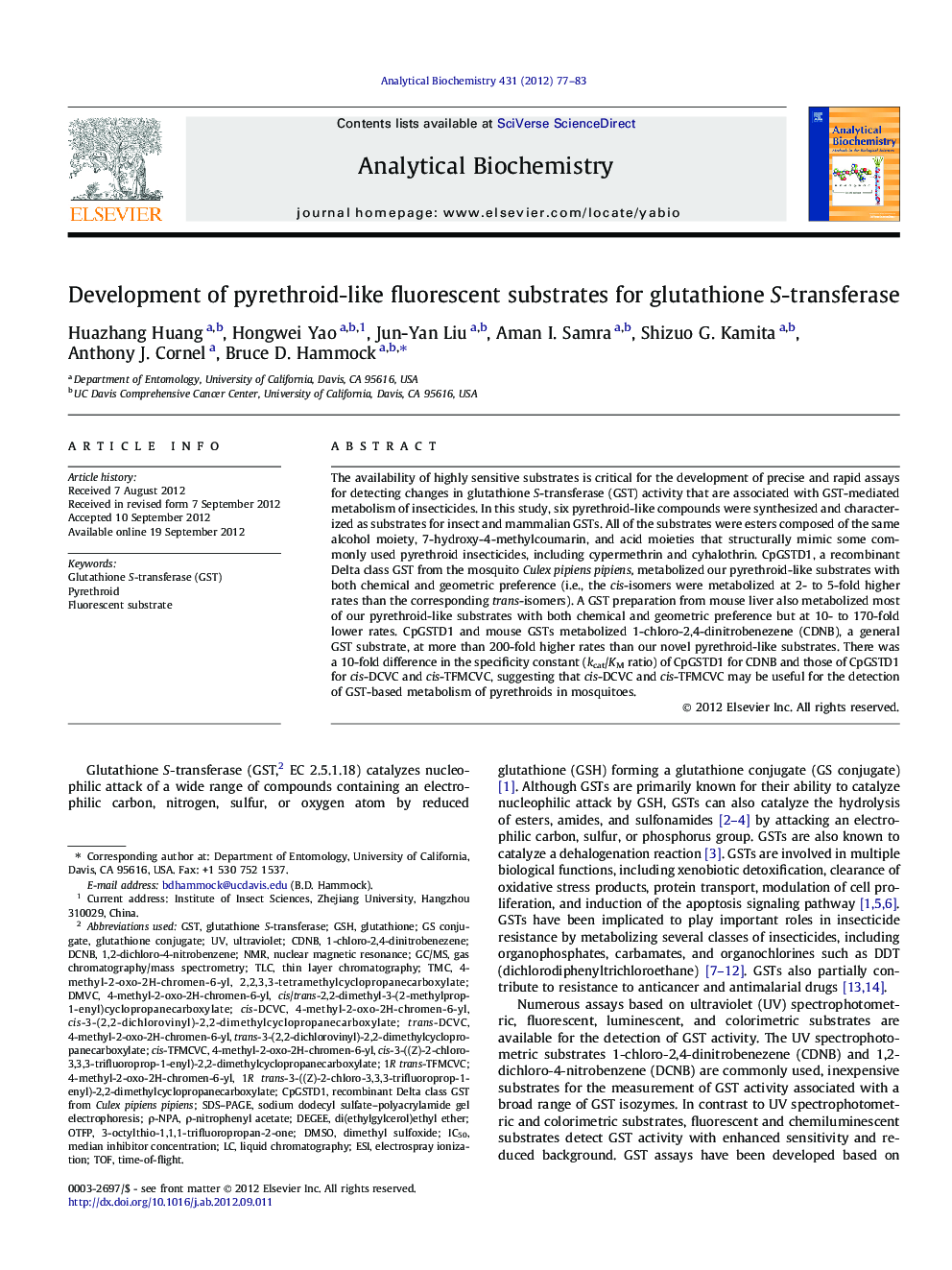| Article ID | Journal | Published Year | Pages | File Type |
|---|---|---|---|---|
| 10533250 | Analytical Biochemistry | 2012 | 7 Pages |
Abstract
The availability of highly sensitive substrates is critical for the development of precise and rapid assays for detecting changes in glutathione S-transferase (GST) activity that are associated with GST-mediated metabolism of insecticides. In this study, six pyrethroid-like compounds were synthesized and characterized as substrates for insect and mammalian GSTs. All of the substrates were esters composed of the same alcohol moiety, 7-hydroxy-4-methylcoumarin, and acid moieties that structurally mimic some commonly used pyrethroid insecticides, including cypermethrin and cyhalothrin. CpGSTD1, a recombinant Delta class GST from the mosquito Culex pipiens pipiens, metabolized our pyrethroid-like substrates with both chemical and geometric preference (i.e., the cis-isomers were metabolized at 2- to 5-fold higher rates than the corresponding trans-isomers). A GST preparation from mouse liver also metabolized most of our pyrethroid-like substrates with both chemical and geometric preference but at 10- to 170-fold lower rates. CpGSTD1 and mouse GSTs metabolized 1-chloro-2,4-dinitrobenezene (CDNB), a general GST substrate, at more than 200-fold higher rates than our novel pyrethroid-like substrates. There was a 10-fold difference in the specificity constant (kcat/KM ratio) of CpGSTD1 for CDNB and those of CpGSTD1 for cis-DCVC and cis-TFMCVC, suggesting that cis-DCVC and cis-TFMCVC may be useful for the detection of GST-based metabolism of pyrethroids in mosquitoes.
Related Topics
Physical Sciences and Engineering
Chemistry
Analytical Chemistry
Authors
Huazhang Huang, Hongwei Yao, Jun-Yan Liu, Aman I. Samra, Shizuo G. Kamita, Anthony J. Cornel, Bruce D. Hammock,
